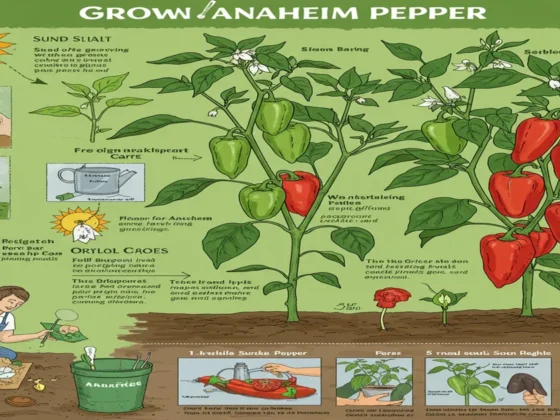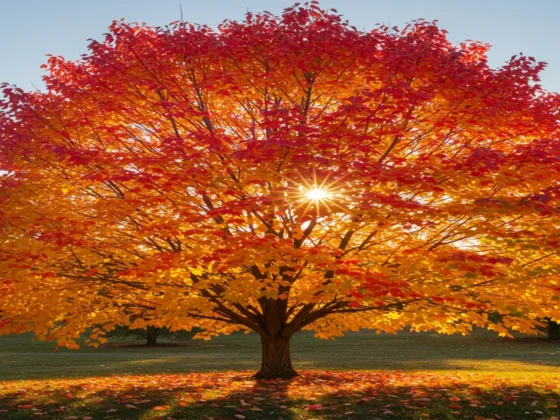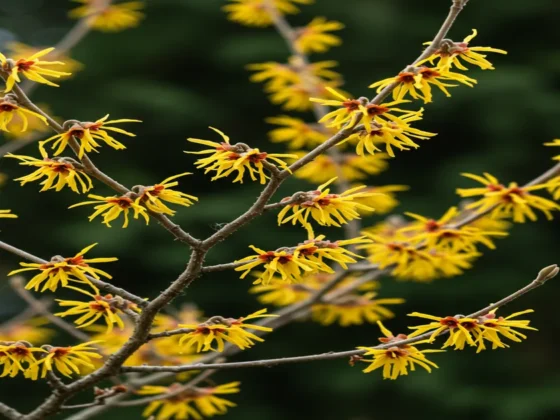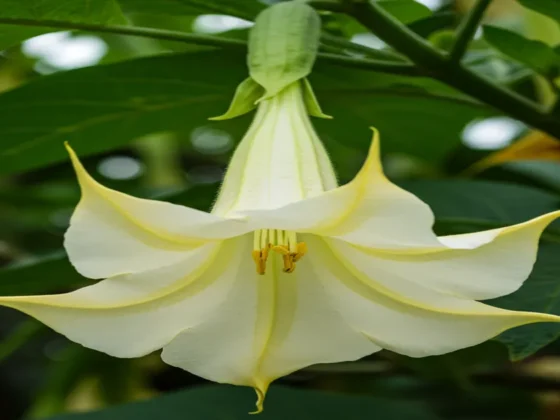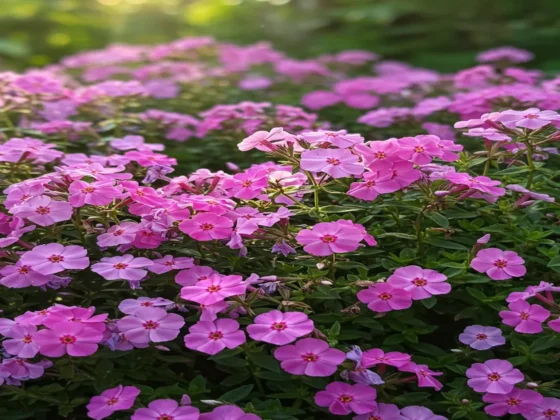Windflowers is a common term for various species within the Anemone genus. The name “anemone” originates from the Greek word “anemos,” meaning “wind.” These plants come in different sizes but typically have clusters of leaves at the base and tall stems that bear delicate flowers. They prefer moist soil and thrive in full to partial sun in milder climates. Anemone plants contain protoanemonin, a substance that makes them moderately toxic to humans and slightly toxic to pets.
| Common Name | Anemone, windflower, Grecian windflower, poppy windflower |
| Botanical Name | Anemone spp. |
| Family | Ranunculaceae |
| Plant Type | Herbaceous, perennial |
| Mature Size | 6-48 inches tall, 2–3 feet wide |
| Sun Exposure | Full, partial |
| Soil Type | Moist |
| Soil pH | Acidic, neutral |
| Bloom Time | Spring, summer, fall |
| Flower Color | Red, orange, yellow, blue, purple, white, pink |
| Hardiness Zones | Zones 3–10 (USDA) |
| Native Area | Asia, Europe, Mediterranean, North America |
| Toxicity | Toxic to humans, toxic to pets |
How to Care for Anemones
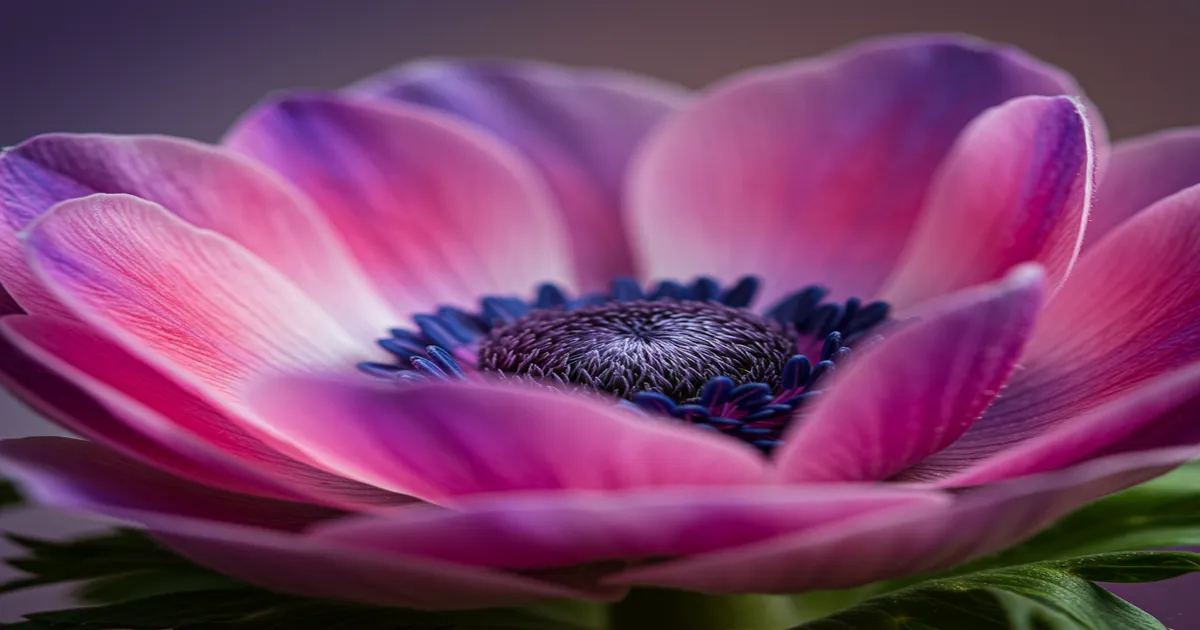
Here are the primary care guidelines for anemones.
- Spring-blooming anemones should be planted in the fall, while fall-blooming ones should be planted in the spring.
- Plant bulb-like corms in clusters, spaced about one inch apart and two inches deep, similar to daffodils.
- Ensure the plant receives a minimum of four hours of sunlight daily.
- Use well-drained soil that is moderately moist.
Light
Most types of anemones should be positioned where they get at least half a day of direct sunlight. Some varieties do well in partial shade, but they still require a minimum of four hours of sun each day.
Soil
Plant anemones in moist, well-drained soil. Prior to planting, enhance the soil by incorporating compost, leaf mold, or other organic materials. Anemones are not picky about soil pH but prefer slightly acidic soil.
Water
Water the plants regularly if rainfall is less than one inch per week. Water slowly to keep the soil lightly moist, allowing it to absorb water effectively. Some varieties have specific water requirements; for instance, wood anemone (A. nemorosa) dies back in midsummer and should not be watered until it regrows in the fall.
Temperature and Humidity
Anemones prefer cooler temperatures. Most types thrive in daytime temperatures of 58 to 65 degrees Fahrenheit and nighttime temperatures of 42 to 50 degrees. Gardeners in USDA hardiness zones 3 to 10 can find suitable Anemone species, but no single species can thrive in all zones. For example, A. blanda and its cultivars are suitable for zones 4 to 8, while A. coronaria and its cultivars can grow in zones 7 to 10. Gardeners in cold-winter zones may opt to grow tender anemones as annuals, planting
Categories of Anemones
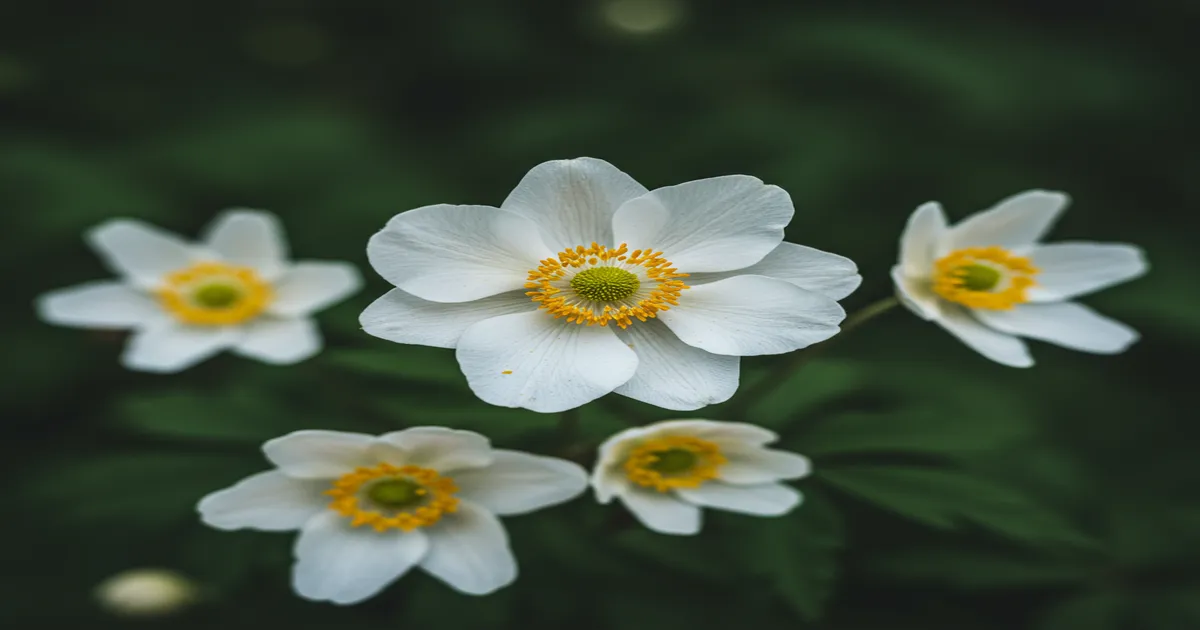
There are various types of Anemone to choose from, each offering a selection of named cultivars. These categories are:
- Anemone blanda: This plant, also called Grecian windflower, thrives well outdoors. Some noteworthy cultivars are ‘Blue Star’, ‘Pink Charmer,’ and ‘White Splendour’.
- Anemone coronaria: Featuring poppy-like blooms with black centers, this variety is popular in floral displays. Also known as poppy anemone, it is reliably hardy. Recommended cultivars include ‘Lord Lieutenant’, ‘Mount Everest’, and ‘Sylphide’,
- Anemone hupehensis var. japonica: Blooming profusely from midsummer to late fall, Japanese anemone offers shade-loving options for gardeners as an alternative to the sun-loving mums and asters of autumn. Some recommended cultivars are ‘Bressingham Glow’, ‘Pocahontas’, ‘Praecox’, and ‘Pamina’.
- Anemone sylvestris: Also known as snowdrop windflower, this plant blooms early in spring and stays low to the ground, making it ideal for the front of a border.
Trimming Plants
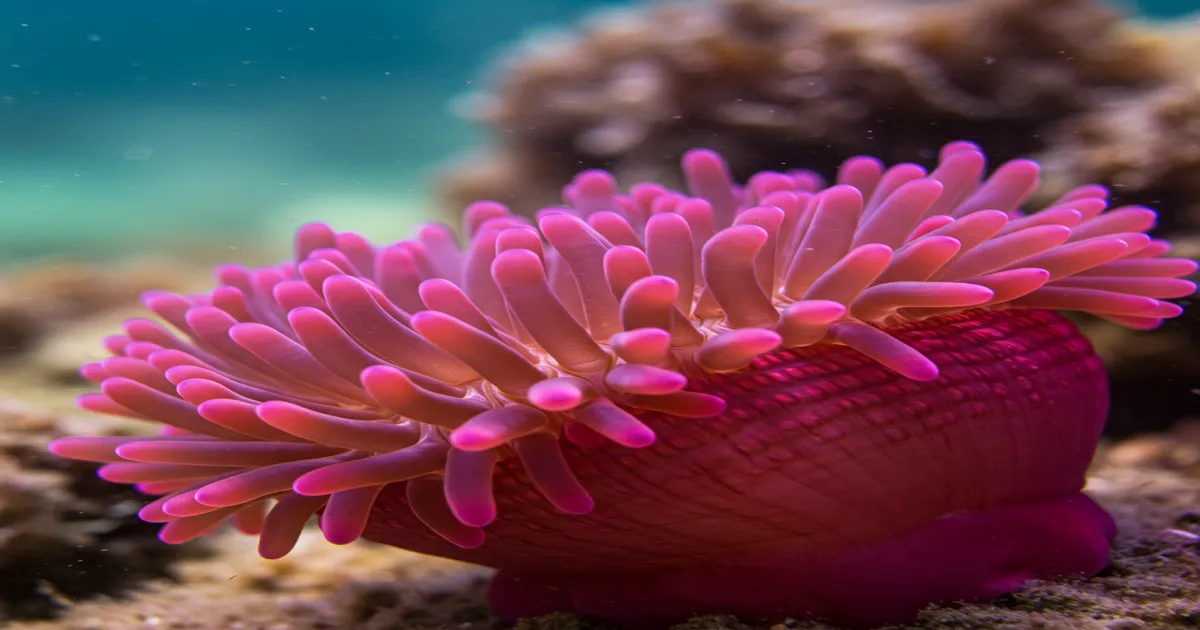
The wilting leaves of plants that bloom in spring are typically small and inconspicuous, so you can let them dry up naturally without needing to trim them for a neat garden appearance. However, taller plants that bloom in the fall may appear untidy after the initial frost, so it’s advisable to remove any dead foliage as part of your end-of-autumn garden maintenance routine.
How to Propagate Anemones
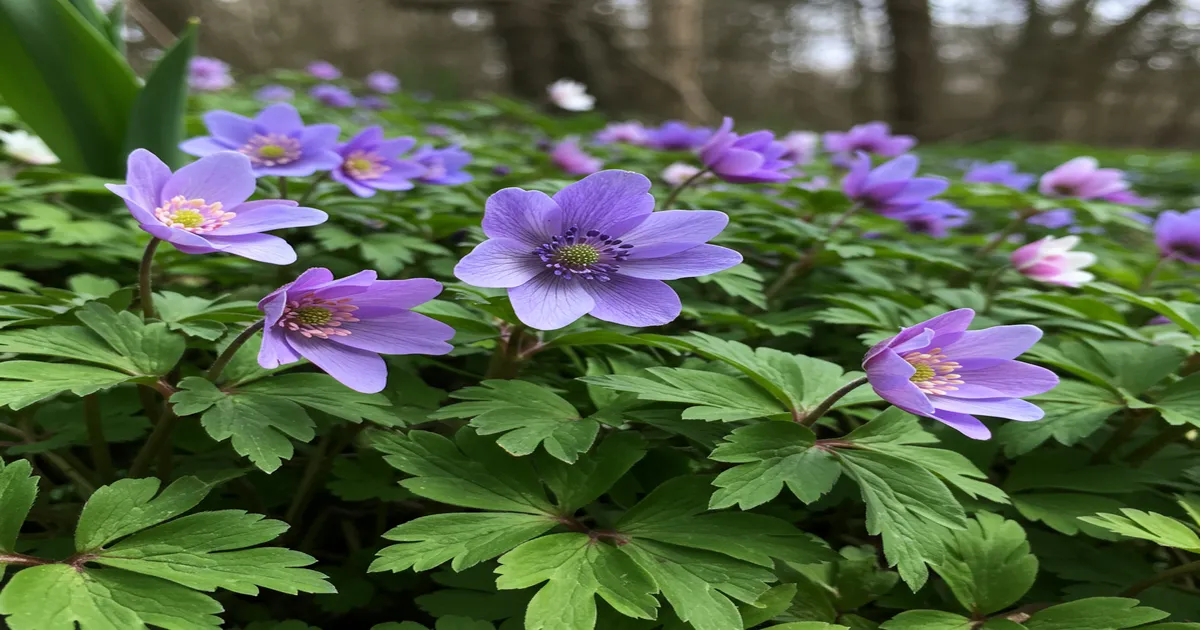
Anemones of various species can be propagated by digging up the corms/tubers, dividing them, and then replanting, despite their different root structures. It is advisable to lift the roots in the fall for winter storage, especially if your garden soil tends to be wet during the winter season. Here’s how:
Guide on Growing Anemones From Seeds
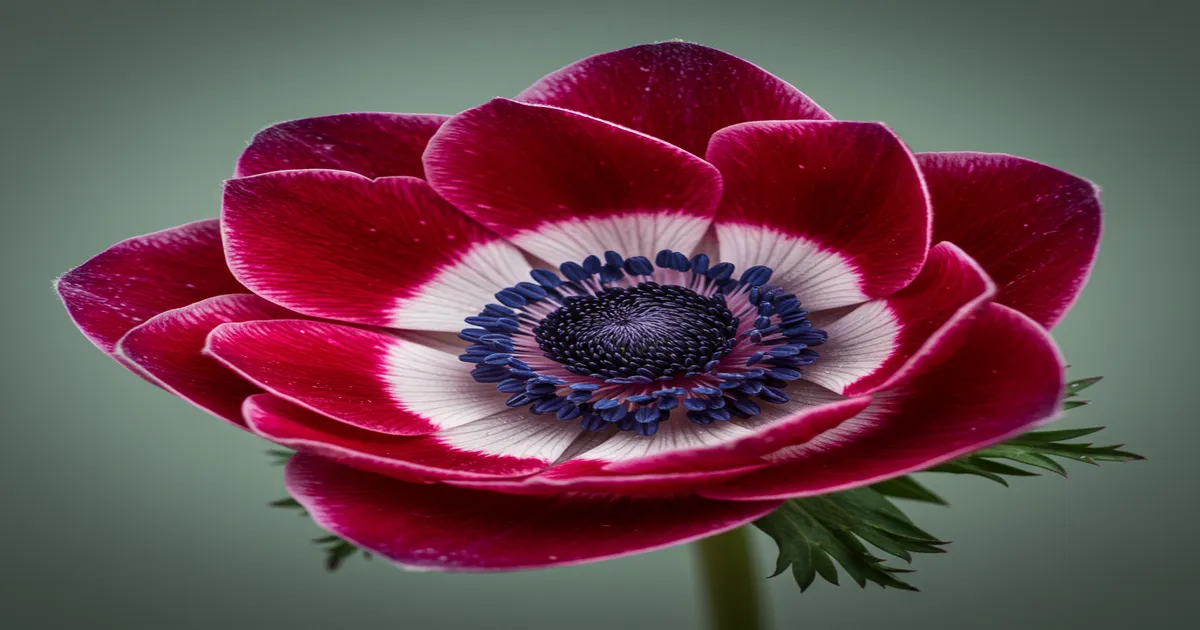
Anemones’ seed propagation is a slow and unpredictable process typically undertaken by dedicated hobbyists or professionals who are developing new varieties through controlled crossbreeding.
If you are interested in trying seed propagation, gather seeds from dried seed heads remaining after the flowers have withered, and plant them in an outdoor cold frame with loose, well-draining soil. The seeds should be lightly covered. Once they germinate, let the seedlings stay outdoors throughout the winter under a thick layer of mulch, then transplant them individually in the following spring.
To start the seeds indoors in pots or trays, they will require a cold stratification period of three to four weeks before being planted in a bright location for sprouting.
Planting and Replanting Anemones in Pots
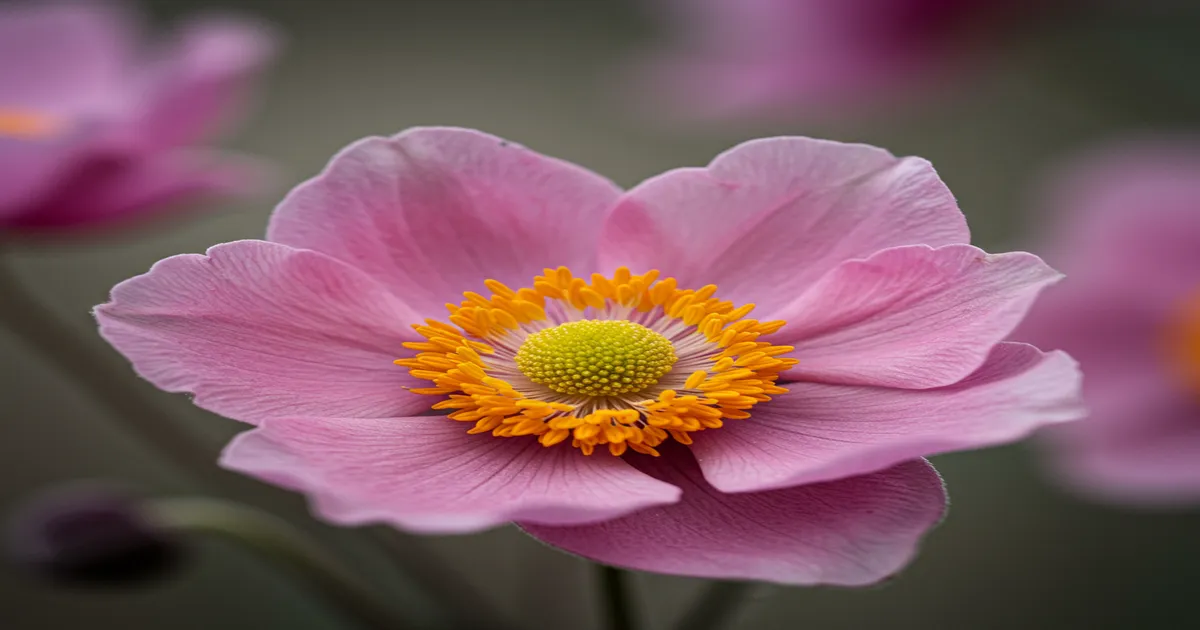
Some Anemone species do not thrive when grown in containers, but one exception is Anemone coronaria, which has numerous cultivars. Opt for a large container filled with regular commercial potting soil mixed with well-decomposed compost. It’s generally recommended to use a spacious 12- to 14-inch pot. Corm-type Anemones should be planted with a minimum spacing of four inches between each; rhizomatous varieties should be planted individually.
Anemones in pots usually struggle when grown indoors, but they can be protected during winter in an unheated greenhouse or another sheltered spot with the required cold period. If the plant’s roots become tightly packed (a problem more common with rhizomatous types), separate the root clump and replant.
Wintering
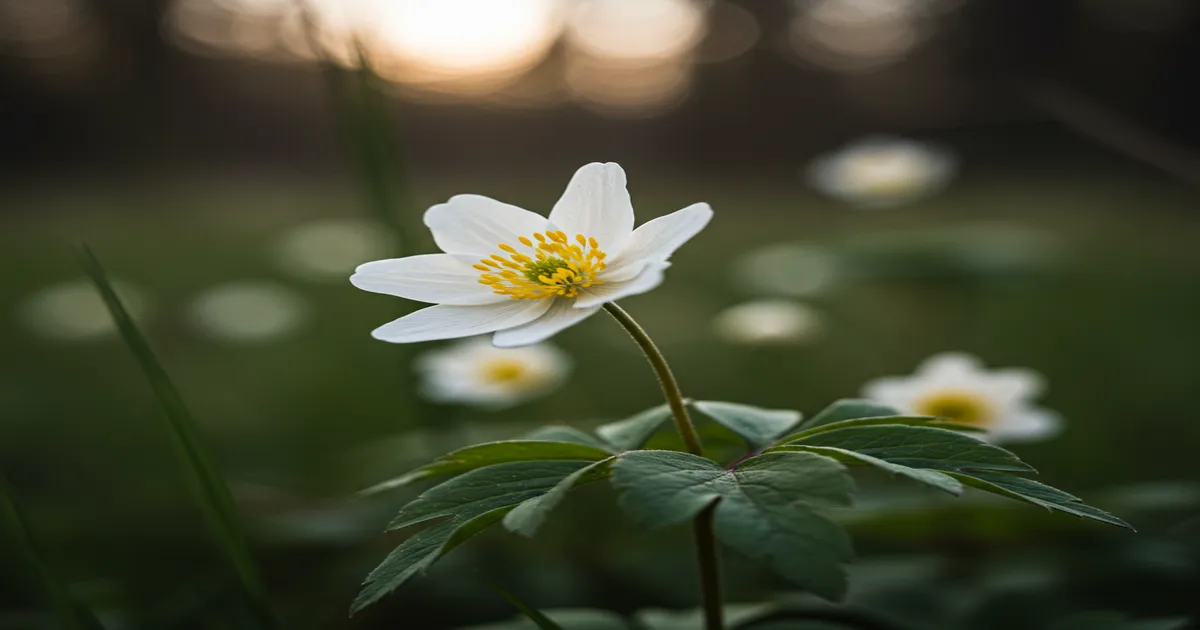
If the species being cultivated is suitable for your climate zone, there is no need for specific winter protection for anemones. Typically, gardeners trim the flower stalks and foliage near the ground level as part of the routine winter garden maintenance.
For species that are marginally hardy in your area, applying a layer of mulch over the root crowns can safeguard the roots from cold damage during winter.
Common Pests & Plant Diseases
Anemones do not usually suffer from severe pest or disease issues, but they can be affected by foliar nematodes that feed on the leaves. These tiny worms in the soil can cause distortion in leaves and flowers by damaging plant cells. Dealing with this problem is challenging, but removing affected plants and heating the soil through solarization can help eliminate nematodes. It is essential to remove and dispose of all plant material in the affected area. Periodically tilling the soil and exposing it to sunlight may also help eradicate nematodes.
Anemones can also be susceptible to various fungal leaf spots, downy mildew, and powdery mildew, although these diseases are usually not severe.
Tips for Inducing Anemone Blooms
Anemone plants are best known for their beautiful cut flowers that can remain vibrant for up to two weeks post-harvest. To maximize the blooming potential of your anemone plant, here are some key considerations.
Blooming Seasons
Anemone flowers typically blossom during spring, summer, and fall. These fast-growing plants often bloom in their first season. The timing of planting anemones should align with the blooming cycle of the specific species you have chosen. For instance, plant spring bloomers in the fall and fall bloomers in the spring.
Duration of Anemone Blooms
Anemone blooms can endure for a considerable period, lasting up to 10 days.
Appearance and Fragrance of Anemone Flowers
Anemone flowers are shaped like cups and are available in various hues such as red, pink, blue, yellow, purple, and white. The color of the flowers is determined by the species and variety. Most anemone flowers consist of single blossoms, although certain types may have double flowers resembling large, frilly mums.
These blossoms are often described as having a woody and fruity scent.
Enhancing Blooms
The majority of anemone species bloom readily when grown in moderately fertile, damp soil. If the plants cease blooming, it is typically due to root overcrowding. By lifting and dividing the root clump or corms, then replanting, the plant can usually be rejuvenated for vigorous flowering.
Additionally, an annual application of bone meal mixed into the soil can offer the slight boost necessary for optimal flowering.
Post-Blooming Anemone Care
After the blossoms have withered, anemones require minimal maintenance. For corm-type anemones, retain the foliage until it naturally fades before removing it
Common Issues With Anemone
Anemones are low-maintenance flowers that may encounter a few problems:
Drooping Flowers
While it’s normal for anemones to sway in the wind, some species may lose their ability to stand upright. Taller anemones might require staking to prevent drooping, especially if they are not receiving sufficient sunlight.
Leaf Damage
Leaves may develop holes if snails or slugs pay a visit. To address this issue, placing small saucers of beer or snail/slug bait can be effective.
Winter Plant Loss
Anemone species can perish during an exceptionally cold winter, particularly if there are unexpected thaws followed by a hard refreeze. The only solution is to repurchase and replant.
If this problem persists, consider digging up the corms or roots for winter storage and replanting them in the spring.
FAQ
How can anemone be used in landscaping?
Can roots be dug up and stored in cold-winter zones?
Yes, if you wish to grow anemone varieties that are not reliably hardy in your region, you can treat them similar



